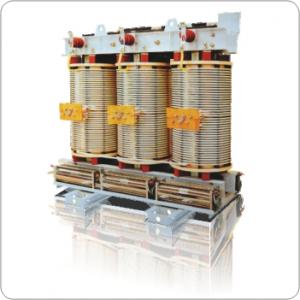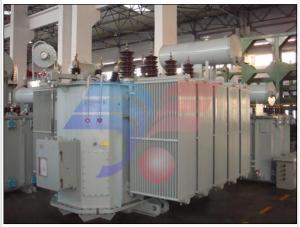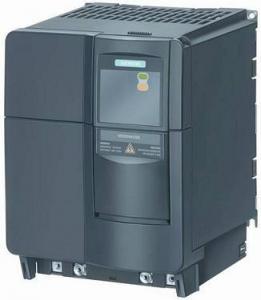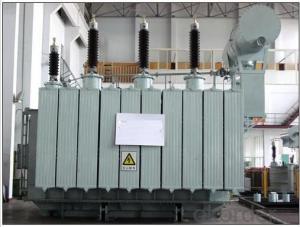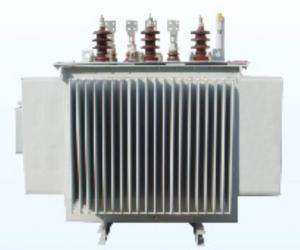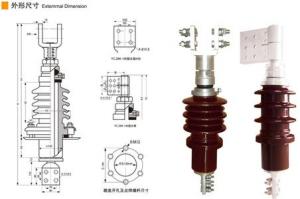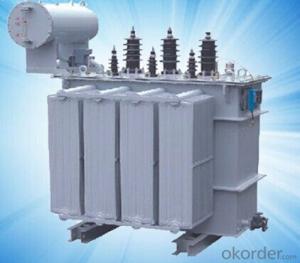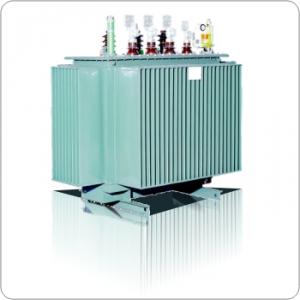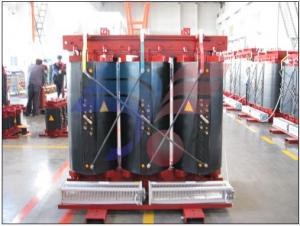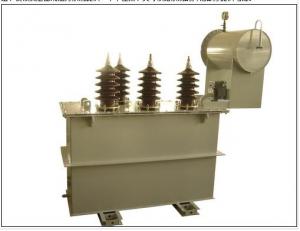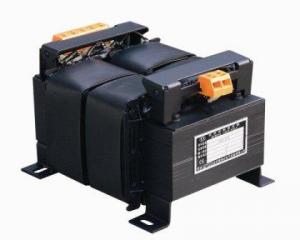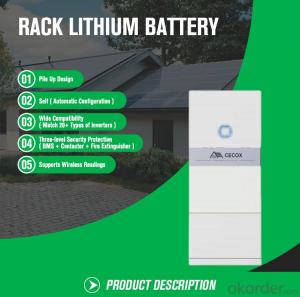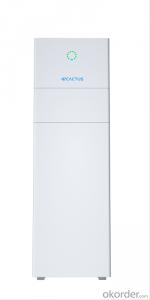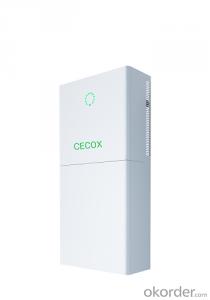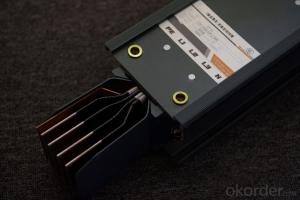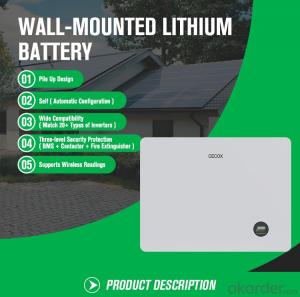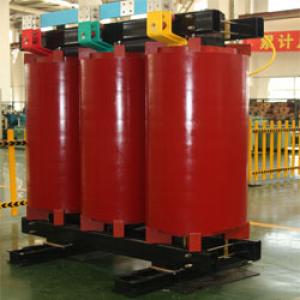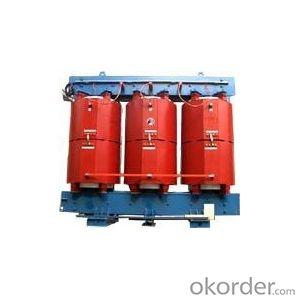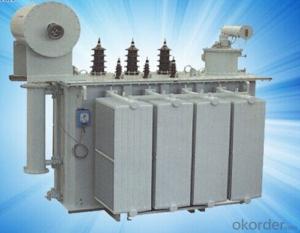SGB10-100-2500-10 H-class insulation three-phase dry-type transformer
- Loading Port:
- Shanghai
- Payment Terms:
- TT OR LC
- Min Order Qty:
- -
- Supply Capability:
- 1000sets set/month
OKorder Service Pledge
OKorder Financial Service
You Might Also Like
Production introduction
Our company has developed this product by ourselves.As a high performance,high safety,pollution free dry-type transformer,it is suitable for the harsh environments where there is a high fire protection requirement,the great load fluctuation and the site where is of filth and moisture.For example:airport,power plant,metallurgy operation,hospital,high building shopping center,densely inhabited ared,petrochemical industry,nuclear power station and nuclear submarine,elc.
Normal service conditions
1.A unique ceramic type of insulation structure is adopted in H-class high strength insulation cylinders and high-frequency ceramic cushion blocks are adopted to ensure that no deformation will occur.
2.The high-voltage and low-voltage windings are made of NOMEX wrapped flat copper wires and imported copper foils.And they are sealed with high strength insulation materials.
3.The iron core is made of laminated imported high-quality silicon-steel sheets of high magnetic conductivity with a 45 stepwise all-bias structure.A flexible fastening unit is adopted to fasten the winding and iron core,which ensures a relatively low no-load loss and low noise.
4.Outlet terminals are fixed to the top of winding,taps are in the middle of winding,low-voltage line terminal are in plate-type current-conducting rows for which cold pressure welding is adopted.
Normal service conditions
1)Altitude should not be over 1000m:indoor type
2)Highest ambient temperature should not over:+40oC;Highest daily average should not over temperature:+30oC
3)Highest annual average temperature should not over +20oC,lowest temperature should not below -5oC,We can provide transformer operated in special conditions according to user's requirement.
Model designation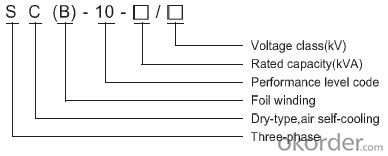
Applicable standards
GB6450-1986 Dry-type power transformer
GB/T10228-1997 Technical parameters and requirements for dry-type power transformer
GB/T17211-1998 Guide rules for dry-type power transformer load
GB10237-1998 Insulation level and insulation test for power transformer
GB4208-1993 Casing protection grade(IP code)
JB/10008-1999 6~220KV transformer sound level
JB/T56009-1998 Product quality grading for dry-type power transformer
Performance characteristics
1.Excellent heat dissipation,long thermal life,good overload capacity,without forced air-cooling under a long-term 120% overload and IP45 condition.It can operate for a long time at full load.
2.Extremely high safety fire resistance performance,smoke-free while burning under a temperature as high as 800oC.
3.Extremely high thremal shock resistance capacity.
4.100% water-proof,excellent moisture -proof.
5.Unique winding structure and field strength calculation makes partial discharge impossible.
6.Low loss and significant energy saving effect.Compared with SC9 series of dry-type transformers,the no-load loss falls 10% and load loss falls 5% in average.
7.The insulation material and copper conductor can be dismantled easily and recycled after the service life. Therefore,no pollution will occur.
Notes for placing orders
Transformer type:rated capacity kVA
Number of phases:three-phase single-phase
High voltage: KV/Low voltage:KV
Frequency:50HZ 60HZ
Tapping range:±4×2.5% ±3×2.5% other
Connection group:Yyn0 Dyn11 other
Impedance voltage:4% 6% other
Cooling method: ONAN ONAF
Protecting grade of outer casing:IP00 IP20 IP30 other
Method of incoming and outgoing line:
1.Incoming line to lower part and outgoing line from upper part
2.Incoming line to upper part and outgoing line form upper part
3.Incoming line to upper part and outgoing line form side part
- Q:A transformer has a 100-turn primary coil and 1000-turn secondary coil. The primary is connected to a 120-V AC source and the secondary os connected to an electrical devic with a resistance of 1000 ohms.what will the voltage output of the secondary be?what current flows in the secondary circuit?what is the power in the seconday coil?what is the power in the primary coil ?what is the current drawn by the primary coil?
- If the secondary has 10 times as many turns, it will multiply the voltage by 10 times. 120 VAC x 10 1200 VAC Use Ohm's law, EIR for the current. Voltage Current times Resistance, Volts Amps x Ohms 1200 I x 1000 I 1.2 Amps Power in Watts E x R (Volts x Amps) 1200 V x 1.2 A 1440 Watts For a 100% efficient transformer, the input power matches the output power. In real life, a bit more power goes in than comes out. That's why the transformer gets warm. For this problem, with a perfect transformer, the input power will be 1440 Watts. That makes the input current 12 Amps. What they want you to see in this exercise is that the transformer, because it has a 1:10 ratio in the windings, is that the secondary will have 10x the voltage and 1/10th the current. The primary will have 1/10th the voltage and 10x the current. And they want to make sure you understand the power in matches the power out.
- Q:I am build a band pass filter but I am wondering if one of the inductors in my filter can act as a transformer at the same time. I'm assuming not since it would be sending all its magnetic energy into the secondary rather than back into the primary. Can someone confirm this for me please? Also, if it DOESN'T act as an inductor than would it be okay to put it in parallel into my filter? Or do I put it in series? Where do I put it lol?Thanks
- A Transformer can be both a car and a robot
- Q:The specific steps and procedures for installing the transformer
- Oil-immersed or dry-type transformers are generally installed by the engineering team or factory installed do not know how much capacity your transformer is electronic or industrial power system
- Q:I am looking for a 220v transformer with these secondary voltages: 2x13v, 1x9v, 1x3vIt has to be at least 20va.I cant find this anywhere :/
- This is an unusual requirement. You may need 2 or more transformers. Do you really need the 2 voltages, or could you develop some of the lower voltage by using DC voltage regulators (if the lower voltages are used for DC)?
- Q:Hello. I am setting up a 70 volt sound system. It is primarily outdoors, so I have weatherproof horn speakers. I have a 120 watt 70v amp. I also have a 70v 15 watt step down transformer. Now, I want to run 2 horns running at 15 watts rms at 8 ohms on one 15 watt step down transformer. I was wondering, is this safe? I know it works, because I have tried it. But, can it run long term and can this hurt the amp?
- You should run 8 each 15 watt speakers on a 120 watt amplifier, but the system is reasonably flexible, and probably self protected, so you can connect several speakers to one of the 8 transformers. The volume on these speakers will be much reduced, but negligible effect on the other 7 transformers. Possibly the transformer with multiple speakers will over heat, but that is unlikely for ordinary music and speech. I'll guess 5 transformers with two speakers each will be ok, and all ten speakers will be the same volume. You can also connect 9 speakers in series to the 70 volt output, without using any transformers, but I understand this lowers the sound quality a little, and means no sound if there is an open circuit anywhere.
- Q:50kva transformer price
- 1,50kva transformer prices vary according to model prices ranging from 6000-20000 yuan.
- Q:I need to get a transformer that produces 12 watts. Problem is that I burned out the previous 2 I had with my hot wire cutter. I have a couple of 9 watt and 3 watt transformers. Is there anyway I can combine them together so that I can produce the desired 12 watts. I was thinking about rectifying to DC. Then putting the power sources in parallel to power my hot wire cutter. Is this a good idea or is there another way to do it.
- It is difficult! (not economical) Transformers work in both directions, it can source and sink. Only transformers designed for series or parallel connections will do! They have to be matched. For your application you need to get the proper transformer. Proper voltage and current rating that is. Hope this properly answers your question Guru
- Q:What are the specifications of the transformer capacity?
- The optimum load rate of the transformer (ie, the load rate at the highest efficiency) is not in the rated state, but between 40% and 70%. The load factor is too high and the loss increases obviously. On the other hand, Margin is small, a slight increase in load, you need to replace the large capacity box change, frequent capacity is bound to increase investment, affecting power supply.
- Q:Altium designer DXP transformer in the same name how to change?
- You can re-draw one, you can also copy the source file in the transformer to change it. As for the PROPERTIES you said in the EDIT PINS NAME option, that is only your name to the pin, help to understand. For example, a transformer with only one primary edge and one secondary side, and the same name (two points of the graphics port) are located in the top, 1,2 pin on behalf of the original side, 3,4 pin on behalf of the secondary, Or 2,4) is the same name. 1,2 PIN (PIN) name (NAME) were Pri +, Pri-; 3,4 pin were Sec +, Sec-. Obviously here pri and sec are primary and second abbreviations, namely the primary and secondary, and +, - can be understood as positive and negative, can also be understood as the same as + (or -) at both ends of the same name. Transformer with the name of the most obvious label is the graphics on the two points. You in the schematic after the change and then on the line. I am also doing this, need to change the same name. You can exchange.
- Q:What is the SN on the transformer? What is the difference between it and the actual power of the transformer?
- What you say SN is the rated capacity of the transformer, the capacity is also called the apparent power. It represents the maximum power that the transformer can transmit in the rated state, that is, the maximum power that the transformer can transmit when the power factor is 1 is SN kW. Transformers are only used to transmit power, in addition to their own no-load loss and load loss, the power does not consume. The actual power it delivers depends on the load.
1. Manufacturer Overview |
|
|---|---|
| Location | |
| Year Established | |
| Annual Output Value | |
| Main Markets | |
| Company Certifications | |
2. Manufacturer Certificates |
|
|---|---|
| a) Certification Name | |
| Range | |
| Reference | |
| Validity Period | |
3. Manufacturer Capability |
|
|---|---|
| a)Trade Capacity | |
| Nearest Port | |
| Export Percentage | |
| No.of Employees in Trade Department | |
| Language Spoken: | |
| b)Factory Information | |
| Factory Size: | |
| No. of Production Lines | |
| Contract Manufacturing | |
| Product Price Range | |
Send your message to us
SGB10-100-2500-10 H-class insulation three-phase dry-type transformer
- Loading Port:
- Shanghai
- Payment Terms:
- TT OR LC
- Min Order Qty:
- -
- Supply Capability:
- 1000sets set/month
OKorder Service Pledge
OKorder Financial Service
Similar products
New products
Hot products
Hot Searches
Related keywords


